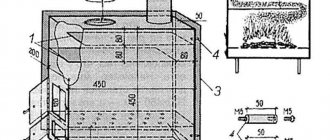Home Information Blog Decorating a painting by numbers in a frame
How fun it is to paint pictures by numbers! You can feel like a real artist, even if you don’t know how to draw at all. Therefore, others will surely follow the first one. But paintings lying on a shelf, rolled into a tube, cannot become either a home decoration or an object of joy. You need to frame them and hang them on the wall.
Optimal placement of paintings in the interior
Mounting for pictures on the wall depends on three parameters:
- Reliability of the wall material.
- The strength of the connection between the mount and the wall.
- Strength of adhesion of the frame or canvas to the fastening.
The wall where the picture is attached can be made of wood, stone materials, plasterboard, lined with ceramic tiles, covered with wallpaper or simply painted.
If you can simply hammer a nail or screw a screw into wood, then with concrete such fixation is difficult or impossible. In this case, wall mounts are used without drilling.
In order to attach 8 pictures to the stand, for example, small engravings, you can use a regular or decorative paper clip or a strip of tape.
To solve the problem of how to hang a picture on a wall of medium size and weight, you will need special fasteners that can withstand a force of 3-5 kg.
Large works (mosaics, panels, bas-reliefs) will require fastenings designed for 10-15 or more kg. And in order to hang a heavy frame with a huge canvas weighing several tens of kilograms, it is necessary to use a special design.
Selecting a location
Placing canvases indoors involves a dual task:
- Convenience of their contemplation for obtaining aesthetic pleasure.
- Complementing and decorating the interior, creating a special atmosphere in the room.
Choosing a place for a painting will be more difficult if there is not one painting, but many. In such cases, it is necessary to allocate special areas for them. At the same time, in order to attach several paintings to a common stand, you have to spend a lot of time and effort so that the composition looks holistic and is in harmony with the rest of the room.
As a rule, paintings are placed in open, visible places. The distance between them and other interior elements is usually selected based solely on the taste of the owners.
The situation is complicated by fasteners, but at the same time made easier by the choice of location, when drawings, photographs, etc. are placed last. Furniture has already been arranged, lamps have been installed, curtains or blinds are hanging. The process of choosing a location boils down to the fact that the masterpiece is alternately placed in different places. They stop at the one that seems most suitable.
It is worth remembering that a large canvas with a massive frame looks ridiculous in a small room. Just like a small picture on a large empty plane.
It is desirable that the plot corresponds to the purpose of the room. Completely different creations are suitable for the interiors of the living room, bedroom, and kitchen.
It is also necessary to take into account that works with landscape orientation, elongated horizontally, visually “eat up” the width of the room, but lengthen the space, while vertically oriented works add height to the room.
Backlight
It is used in cases where the impression of the picture should not depend on the time of day, or when ordinary lighting is not enough. It can work either continuously or turn on as needed.
Something about sizes
The answer to the question of where it is better to buy a frame - in a framing workshop or in a specialized store for artists - depends on what format your painting has. The workshop will make any frame, and the store will offer standard ones:
- 20x25 cm;
- 30x35 cm;
- 40x50 cm;
- 45x60 cm;
- 50x60 cm;
- 60x75 cm;
- 75x100 cm.
The choice is large, but still limited. However, in the best stores you will also find sizes that differ from the standard.
Important! As for fasteners, they are sold in sets - for example, staples in a package of 4 pieces. For a small or medium format picture this is usually enough. Screws are not always installed - most often the picture is attached without them. But there are also screws of several sizes.
Traditional methods of mounting pictures
In most cases, to hang a picture, they use a time-tested technique that is suitable for all types. This is a nail driven into the wall at an angle. The canvas is suspended from it using a special loop or cord. The wall can be anything.
On a wooden wall
Even if the wall is plastered, the metal fasteners fit in quite easily. But in order not to leave sloppy chips on the plaster, it can be pre-drilled. A screw is screwed into the hole, an “L” shaped curved at the end, or ending in a half ring, or a nail is simply driven in.
The thickness of the nail depends on the weight of the painting.
On concrete
The option that causes the greatest difficulty, since to drill a hole you need a hammer drill or at least a hand tool called a “bolt” - a hardened steel tube with teeth at the end.
A regular plastic dowel is inserted into the hole, into which the bolt hook is then screwed.
For particularly heavy paintings, you can use an expansion anchor. This is a tube, 5 cm long, along the entire length of which runs a bolt ending with a screwdriver head, nut, or hook.
When the rod rotates, the plug moves along the thread and expands the tube, fixing it securely.
On the brick
It is easier to drill into brick than into concrete. Therefore, a drill with a diamond or pobedite drill bit is suitable.
After the hole is drilled, a dowel with an anchor or an expansion bolt is used, as when fastening to concrete.
In addition to the methods listed above, you can drive a special hardened nail into the brick. Usually a mounting gun is used for driving, but it can be driven into a brick wall with an ordinary hammer.
On drywall
Self-tapping screws and nails are easily screwed into plasterboard sheet (GKL), but the material itself is fragile and does not hold this type of fastener securely. To hang heavy pictures you need to use special anchors.
For small ones, plastic plugs of various designs, dowel-nails, as well as expansion anchors of the “butterfly” type and the like are used. But even in this case, the weight that the mount can support usually does not exceed 15 kg.
If the canvas is heavy, it is recommended to attach it to a load-bearing wall. And if this is not possible, then an additional reinforcing structure - a frame - should be installed. Such actions require a significant investment of time, money, and special skills.
A few simple rules
Regardless of whether you insert the picture yourself or contact a framing workshop, you must follow these simple rules:
- Never wet the canvas before stretching it on a stretcher - such strange handling will deform the canvas and various other troubles may arise, such as the appearance of fungus or rot.
- The canvas threads are positioned parallel to the slats, and not at an angle, so that the material does not stretch arbitrarily.
- The primer is applied to the blank canvas when the future painting is already on the stretcher.
- The picture is inserted into the frame, placing the stretcher on a flat horizontal surface - most often on a table or on the floor, depending on the size.
- If the picture is large, a cross made of wooden planks is placed in the center.
- You can place pieces of thick fabric under the nails so that the threads of the canvas do not stretch or break.
How to hang a picture without a hole in the wall
Most paintings that have to be hung in residential or public spaces are not particularly massive and, even together with the frame, do not weigh more than 3-5 kg. The load from engravings and small photographs sometimes does not reach a kilogram.
Some interesting devices allow you to hang a picture on the wall without drilling.
Special Velcro
Clothing Velcro, designed like a burdock, has become widespread. They consist of two elements: on one there are many tiny plastic hooks, on the other there is a fleecy surface on which these hooks easily cling.
If necessary, by applying a certain force, these parts come apart with a quiet crack, but can be reconnected.
Simple wooden frame
The easiest and cheapest way to frame a painting. Such frames come with glass and a backdrop, or with a subframe, but the first option is more common. You can buy one in an artist supply store or in some photo stores:
- Place the frame with the back side facing up.
- Bend the metal plates.
- Remove the backdrop.
- Place the painting on the glass with the back side facing up.
- Align.
- Cover it with a backdrop.
- Bend the mounting plates.
Features of non-standard paintings
In addition to the usual paintings, consisting of a frame with a painting stretched over it, there are also “non-standard” ones, that is, differing in the design itself. Two types of arrangement of such paintings can be distinguished.
No frame
It could be a pencil drawing, watercolor, engraving or even an unusual calendar. The weight of such paintings is usually small and they can be placed on the wall by securing them with ordinary push pins. Possibly with decorative heads.
Often there is an option when the frame is hidden, or rather its role is played by the internal frame, which gives the picture rigidity. In this case, the methods described above are suitable for mounting on the wall.
For lightweight products, these can be Velcro; for larger ones, they can be anchors and hinges that are attached to the frame with glue, small screws or nails.
Modular
It is a composite fabric. Each individual block has a part of a larger picture drawn on it. The task of how to attach a modular picture to a wall is complicated by the fact that its elements must be located in strict accordance with each other.
For this purpose it is convenient to use a common guide rail. It is attached to the wall or ceiling in the usual way using anchors or dowels. Then strong cords are attached to this bar, on which parts of the picture are in turn hung.
Such fastening for modular paintings is also convenient because the adjustment of the component blocks can be done extremely accurately, both vertically and horizontally.
If the guide strip violates the design of the room, parts of the modular picture can be hung using one of the methods described above, but this will require scrupulous markings, otherwise the disharmony of poorly joined blocks will negate all the work. Therefore, it is better to entrust the installation of a modular picture to professionals.
If the frame is too big
It also happens that it is not possible to select a frame strictly according to the size of the watercolor or pastel. In this case, you will need an additional backdrop. You can make it from cardboard or paper:
- Trace the existing backdrop onto a sheet of thick paper.
- Cut it out.
- Position the picture and try on the frame - the sides of its opening should coincide with the sides of the picture or, at a minimum, be strictly parallel.
- Secure the painting to the additional backdrop using glue or double-sided tape.
- Place your work in the frame.
Methods for attaching heavy paintings
Fixing a fairly large painting weighing 15-20 kg will not be a problem: a regular tubular anchor with a diameter of 12 mm can support up to half a ton. However, not every wall can withstand such weight.
If the wall material is plasterboard or foam concrete plates, special easels will have to be built to install heavy bas-reliefs, mosaics, paintings in metal frames.
To do this, racks made of wooden beams or profile pipes are installed between the floor and ceiling, fastening them together. The picture is hung on this device and its weight is distributed over many points at once.
This type of mounting is usually found in galleries.
For any painting or other work it is possible to choose a reliable mount. The installation itself may require the use of special tools. But no instrument can replace aesthetic taste and a sense of proportionality.
Did you manage to solve your problem using the recommendations from the article?
Yes!
46.33%
No. More answers required. I'll ask in the comments now.
38.06%
Partially. There are still questions. I'll write in the comments now.
15.62%
Voted: 762
We fasten the canvas with ribbons
To do this, you will need thick cotton fabric, as well as some tools:
- ruler;
- pencil;
- sharp scissors;
- furniture stapler.
First you need to mark the fabric.
Important! It is very good if you have ready-made cotton tape, but any dense material is quite suitable. How to cut it - along the lobe or on the bias - does not matter in this case.
Operating procedure:
- Draw a template - a strip 7 cm long and 3 cm wide.
- Using the template, cut out the ribbons.
- Find the grooves - the places where the frame touches the picture.
- Nail the strips there with a furniture stapler (this is done in the plane of the frame).
- Place the picture in the frame - the ribbons should be visible between the stretcher and the frame itself.
- Fold the ribbons.
- Pull each one tight.
- Fix it on the subframe in the same way as in the previous case.
- Trim the excess end of the ribbon
Important! For a small picture, four ribbons are enough.
Liquid Nails
This method allows you to securely attach the piece of art to the wall, but it’s worth noting right away that you won’t be able to change the position of the painting without damaging the surface.
If you decide that the canvas will hang in this place for many years, follow the following algorithm.
- Outline the intended location of the product with a pencil on the wall using a level.
- Before using glue, the surface of the wall and painting must be degreased.
- Apply Liquid Nails around the perimeter of the frame, leaving a 5cm gap between the dots.
- Glue the picture along the marked markings and press firmly. Hold for better fixation until the glue dries.
Advice
Instead of Liquid Nails, you can use polymer glue or Super Glue. If it becomes necessary to dismantle the painting, it must be removed very carefully. There is a high probability that you will have to change the wallpaper or re-plaster the surface.
Home craftsmen offer an original method. You can hang the product not on the wall itself, but on a bottle cap. It is carefully cut across to create smooth rounded parts 0.5-0.9 cm thick. They are glued to the wall, and then secured with a screw.
Double sided tape
If the picture with which you plan to decorate your interior is light, and its format does not exceed A4 standards, it is not difficult to attach it to the wall without drilling or damaging the wallpaper. For this purpose you will need double-sided tape. It is worth considering that in this method, it is advisable to give preference to a fabric-based structure, since its physical properties allow it to withstand a decent weight.
Scotch tape is not a capricious material for fastening, because it is perfectly fixed on any surface, even if the wallpaper has a convex pattern. The composition of the wallpaper does not matter either - the sticky layer will have equally reliable adhesion to both paper and vinyl and non-woven coverings.
It will be especially successful to use adhesive tape on a plasterboard surface, which itself is very sensitive to any mechanical stress. Simply put, using such a sticky product is the real way out of the situation, hanging a picture without drilling or nails, without damaging the wallpaper and the wall.
It is worth considering one feature when working with adhesive tape: you can remove it at an angle of 90 degrees, then not a trace will remain on the surface of the wall, and the wallpaper will not be damaged. But this advice is only useful if you plan to rehang the painting.
Before you begin the process of attaching the painting, you should outline the location of its future location. After this, the tape must be attached at one end to the picture. Having released the second sticky part, you can place it on the previously designated place on the wall and press firmly for a few seconds. For reliability, it is advisable that the tape is fixed on the frame in several places, for example, in each corner or on the top and bottom sides.











